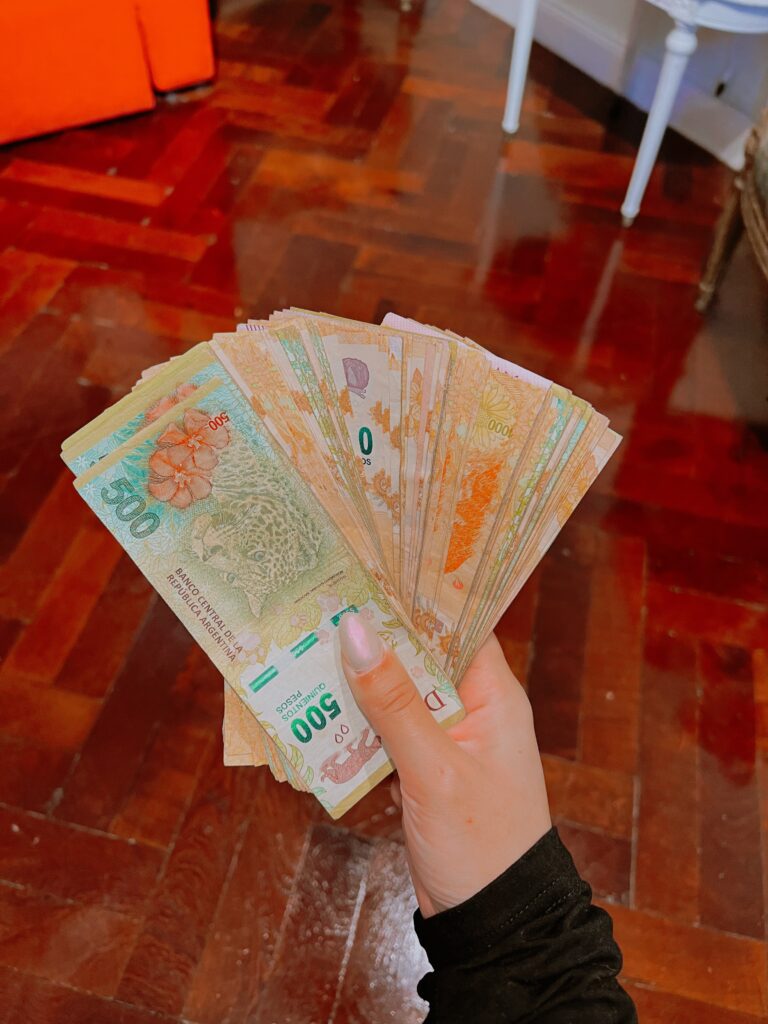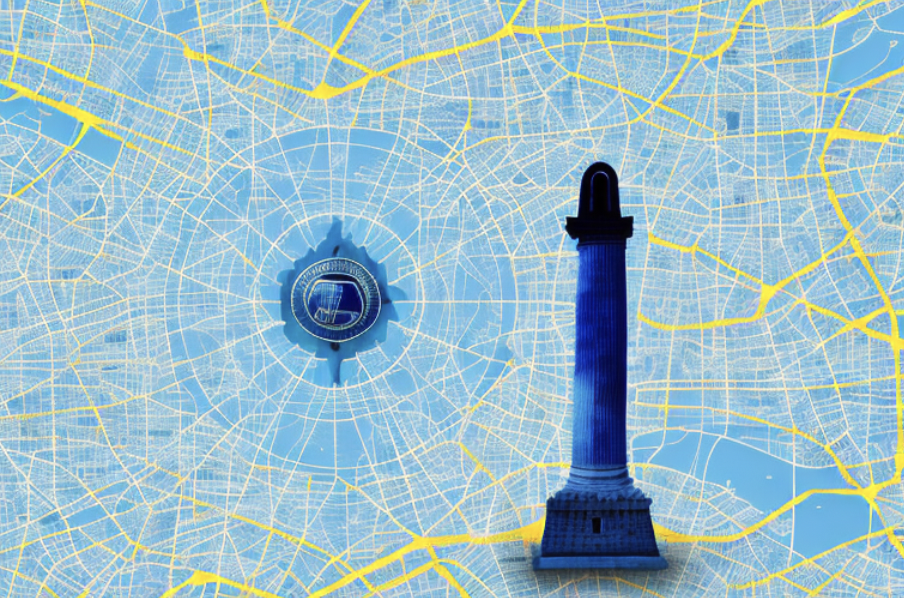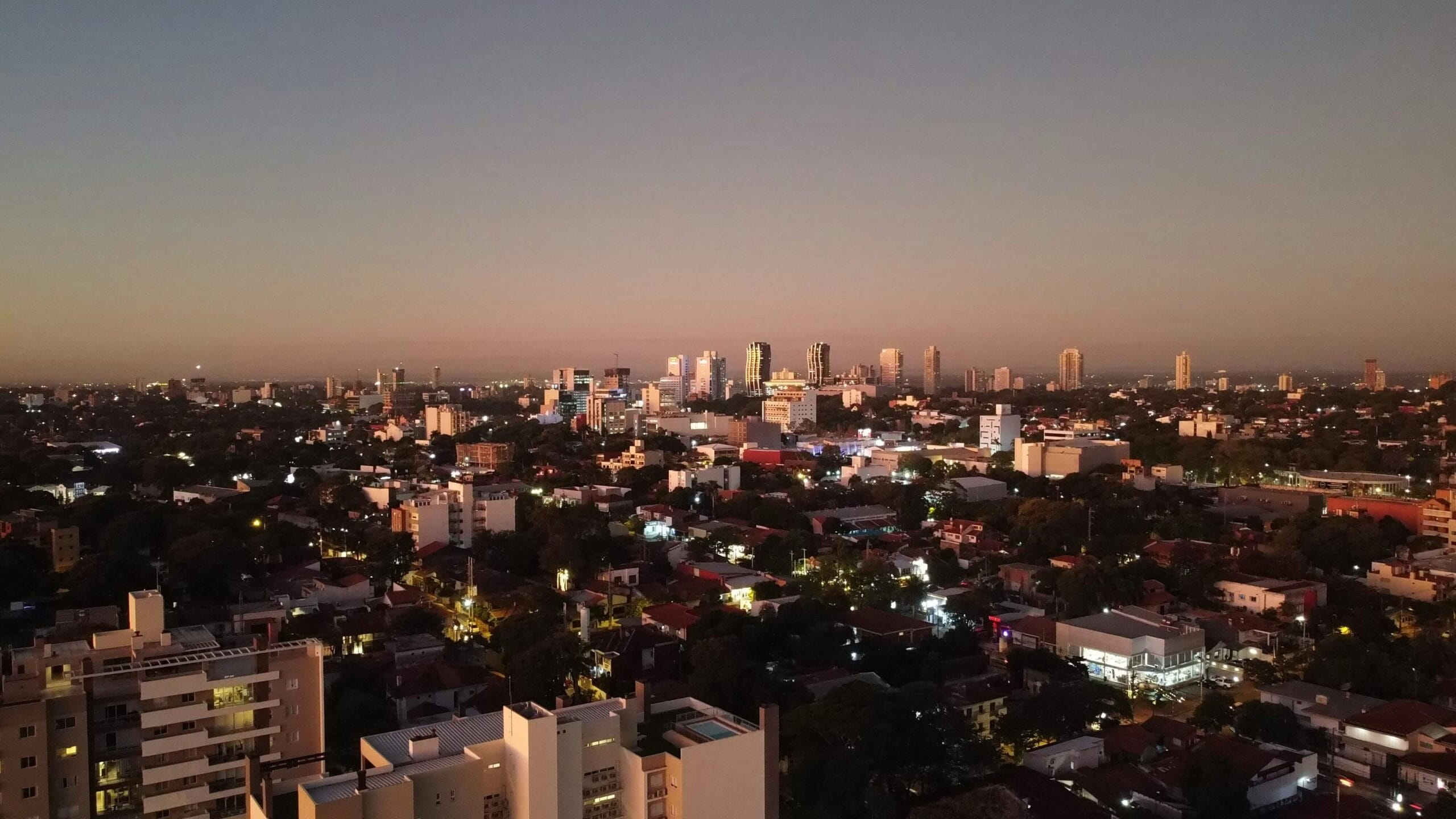Read Next
In the world of finances, the term ‘Blue Dollar’ might raise a few eyebrows. Nevertheless, this unique aspect of the Argentine economy is central to understanding the nation’s financial dynamics. In this article, we dive deeper into the concept of the Blue Dollar, how it impacts Argentina’s economy, and further considerations for exchanges.
Understanding the Concept of the Blue Dollar
If you’re new to the concept of the Blue Dollar, you can think of it as a parallel exchange rate in Argentina that is significantly higher than the official rate. It’s an unofficial rate that originated as a response to the government’s hefty restrictions on buying US dollars.
Now, you might wonder why Argentinians would concern themselves with acquiring US dollars at a rate higher than the official one. The reason lies in the country’s history of fluctuating currencies and economic crises, which have led its citizens to seek refuge in the more stable US dollar. This demand for a dependable currency has led to the emergence of a parallel market, leading to the existence of the Blue Dollar.
After I spent 3 months in Argentina, I feel confident in understanding the Blue Dollar and how it can benefit foreigners, but how it is detrimental for the locals. In this articles, we will dive into this further.
The History of the Blue Dollar
The Blue Dollar didn’t always exist. It came into existence about a decade ago, in 2011, when the government imposed strict currency controls. These measures were taken to prevent capital flight due to the country’s economic instability. However, instead of achieving the desired outcome, it unintentionally gave birth to a black currency market where the dollar is bought and sold at a higher, unofficial rate.
Since its inception, the Blue Dollar has been a tell-tale sign of Argentina’s economic health. The higher the rate, the more unstable Argentina’s economy is perceived, causing more Argentinians to flock to the parallel market. It has become a barometer of the country’s economic well-being, closely watched by economists and citizens alike.
But how does the Blue Dollar actually work and why does its rate fluctuate? Let’s explore the intricacies of this parallel exchange market.
How the Blue Dollar Works
The Blue Dollar operates on the principles of demand and supply. When confidence in the Argentine Peso decreases, due to high inflation or an unstable economy, the demand for US dollars increases. As a result, the Blue Dollar rate rises. This phenomenon occurs because people perceive the US dollar as a safer and more stable currency, especially during times of economic uncertainty.
It’s important to note that the Blue Dollar is not an officially recognized exchange rate, but rather a reflection of the market dynamics and the preferences of individuals seeking a more stable currency. While it may not have the legal status of the official exchange rate, it plays a significant role in shaping the behavior of businesses and individuals in Argentina.
When I go to exchange money at any of the unofficial exchange houses (not Western Union, etc), I will get a much better exchange rate for my USD than I would at any local exchange house. I would often get 2x or 2x+ what the official rate was!
The Impact of the Blue Dollar on Argentina’s Economy
Despite its unofficial status, the Blue Dollar exerts a significant influence on Argentina’s economy that can’t be ignored. It affects inflation rates and stimulates the black market.
The Blue Dollar and Inflation
Inflation and the Blue Dollar share a complex, interactive relationship. A rise in the Blue Dollar rate can accelerate inflation, as imports become more expensive when the Peso depreciates. This means that the cost of goods and services that rely on imported materials or components will increase, putting pressure on businesses and consumers alike.
Conversely, high inflation can lead to a loss of confidence in the Peso, encouraging Argentinians to buy Blue Dollars and consequently increasing its rate. This creates a self-reinforcing cycle where the devaluation of the Peso fuels the demand for Blue Dollars, which in turn puts more pressure on the Peso’s value.
Thus, the Blue Dollar acts as a barometer for future inflation in the country, making policymakers’ tasks more challenging. They must carefully monitor the Blue Dollar’s rate and its potential impact on inflation to implement effective measures that maintain stability in the economy.
The Role of the Blue Dollar in Argentina’s Black Market
The Blue Dollar fuels the black market by providing a platform for Argentinians to bypass governmental currency controls. This parallel economy is illegal but thrives due to the public demand for US dollars and the inadequate supply from official channels.
With limited access to foreign currency through legal means, individuals and businesses turn to the black market to obtain the US dollars they need. This demand creates a thriving underground market where Blue Dollars are bought and sold at rates higher than the official exchange rate.
This market’s existence angers the government, as it undermines their efforts to control the flow of currency and stabilize the economy. However, it also serves as a clear indicator of the public’s trust in Argentina’s financial policy and the economy’s health. The fact that so many people are willing to engage in the black market suggests a lack of confidence in the government’s ability to manage the currency effectively.
Moreover, the black market for Blue Dollars has broader implications for the economy. It hampers foreign investment as potential investors are deterred by the lack of transparency and the risks associated with operating in a country with a thriving black market. This, in turn, limits economic growth and development.
In conclusion, the impact of the Blue Dollar on Argentina’s economy cannot be underestimated. It plays a crucial role in shaping inflation rates and fuels the black market. The complex relationship between the Blue Dollar, inflation, and the black market highlights the challenges faced by policymakers in maintaining stability and fostering trust in the country’s financial system.

Comparing the Blue Dollar to the Official Exchange Rate
The disparity between the Blue Dollar rate and the official exchange rate reflects Argentina’s economic health, monetary policy, and degree of confidence in the government’s economic decisions.
Argentina, a country known for its rich history and vibrant culture, has long been grappling with economic challenges. The Blue Dollar, an unofficial exchange rate used in the country, has become a symbol of the nation’s economic fluctuations and the public’s sentiments towards the government’s handling of the economy.
Understanding the dynamics of the Blue Dollar rate requires a closer look at Argentina’s economic events, policies, and the overall confidence in its currency, the Argentine peso.
The Fluctuation of the Blue Dollar Rate
Year by year, month by month, the Blue Dollar rate constantly fluctuates. These variations are directly related to Argentina’s economic events, policies, and overall confidence in the currency.
Argentina’s economy, like many others around the world, is influenced by a myriad of factors. From global market trends to domestic policies, each variable plays a crucial role in shaping the Blue Dollar rate. Economic events such as changes in government leadership, fluctuations in commodity prices, or shifts in international trade agreements can send ripples through Argentina’s financial landscape.
When Argentina’s economy is perceived as unstable, the Blue Dollar rate rises as the demand for dollars increases. Investors and individuals alike seek the stability and security that the US dollar offers during uncertain times. This surge in demand puts upward pressure on the Blue Dollar rate, creating a wider gap between it and the official exchange rate.
Conversely, when the economy is seen as stable, the Blue Dollar rate falls as the demand for dollars decreases. A stable economy instills confidence in the local currency, reducing the need for individuals and businesses to resort to the Blue Dollar market.
The Gap between the Blue Dollar and the Official Rate
The gap between the Blue Dollar and the official rate is referred to as the “Cambio” rate. The width of this gap is a direct reflection of the public’s trust in government economic policies.
Argentina’s government, aware of the economic implications of a wide gap between the Blue Dollar and the official rate, has taken various measures to address this issue. From adjusting the official rate to imposing new financial regulations or removing old ones, policymakers have attempted to narrow the gap and restore public confidence in the local currency.
However, despite these efforts, the gap’s persistence demonstrates the deeply rooted economic challenges faced by Argentina. The public’s trust in the government’s ability to stabilize the economy and make sound economic decisions remains a significant factor influencing the Blue Dollar rate.

How to Exchange Blue Dollars in Argentina
To get the Blue Rate, you will need to go to an unofficial exchange house. Any official exchange center like a bank or Western Union will give you the normal exchange rate. It’s also important to note that only foreigners can get the Blue rate.
While exchanging Blue Dollars is theoretically straightforward, there are some important things you should know as there are legal implications and safety considerations to pay attention to.
Legal Implications of Exchanging Blue Dollars
Exchanging Blue Dollars can be a risky business because it operates within a legal gray area. Strict controls on currency transactions have pushed dollar exchanges into the black market, where legality is questionable.
While it’s unlikely that tourists or foreigners would face legal consequences, locals are more at risk, particularly those involved in large transactions. The government’s position on this matter can shift unpredictably, so it’s always best to stay informed and proceed with caution.
Safe Practices for Exchanging Blue Dollars
When exchanging Blue Dollars, safety is a primary concern. Not only is the act technically illegal, but the black market is also rife with scams and counterfeit money.
To ensure safety, foreign visitors are advised to exchange small amounts at a time, avoid high-risk areas, and check notes carefully. In addition, using a trusted contact for such exchanges can significantly reduce risk.
The Future of the Blue Dollar in Argentina
As Argentina navigates its complex economic challenges, the future of the Blue Dollar remains uncertain. Analysts closely watch government policies affecting the Blue Dollar and predicted trends for this unofficial currency.
Government Policies Affecting the Blue Dollar
Various measures have been taken to limit or even eradicate the use of the Blue Dollar. While some have been successful in temporarily reducing the gap between the Blue Dollar and the official rate, none have been able to maintain it in the long run. It remains to be seen whether future policies will be able to achieve that goal.
Predicted Trends for the Blue Dollar
It’s challenging to predict the Blue Dollar’s future with any certainty. It largely depends on factors such as economic stability, inflation, and government policy. However, as long as significant economic uncertainty persists and Argentinians continue to seek a stable currency, the demand for Blue Dollars will likely remain.
In conclusion, while the Blue Dollar adds to Argentina’s economic complexities, it also offers fascinating insights into the country’s financial landscape and the resilience of its people. This blue currency is sure to remain a hot topic in the years to come.
Learn More
If you want to learn more about becoming a digital nomad, creating a business you are passionate about, global taxes, and entrepreneurship, check out the links below:
The Work, Wealth and Travel Podcast
Also Read
Ultimate Guide to Obtaining Residency in Paraguay in 2023
Everything You Need To Know About Argentina’s Blue Dollar
Leave a Reply Cancel reply
Top PostS
The Importance of Legal Protection for your Business
Best Fintech Banks for Digital Nomads
Taxation Systems Around the World
LISTEN IN
Listen to The Work, Wealth & Travel Podcast
Take the next step towards a global citizen lifestyle
See what services are offered and how we can help you in your global citizen optimization journey
get in touch
Reach out today to get the process started
Borderless diversification
Privacy Policy
Affiliate Disclosure
Terms of Service
Terms of Use
©2024. Worldwise Capital. Nomad Creativ LLC. All rights reserved.

